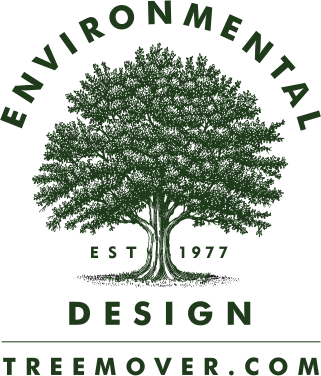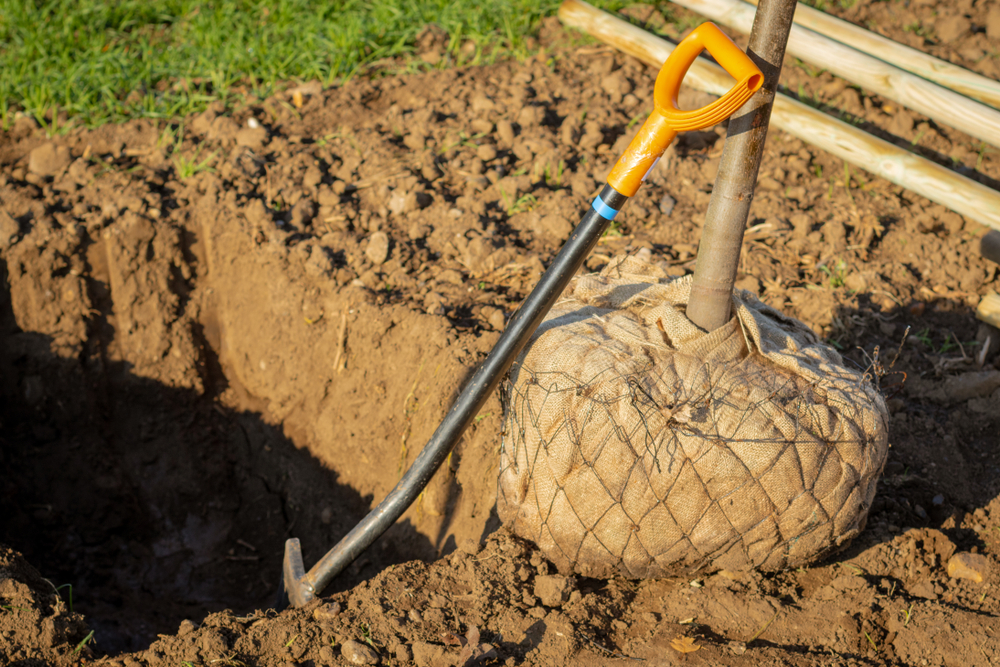When you are ready to choose a tree, you will find they come in three different formats: container trees, bare-root trees, and trees wrapped in burlap.
Container trees have been grown in containers and are moved with their containers. When it’s time to plant them, we take them out of the container, loosen up the exterior feeding roots, and plant them in their new position.
Bare-root trees have been dug out of their growing spot. These trees have very little soil around the roots and should be planted immediately, as the roots could dry.
Burlap trees have been dug out of their original growing site with significant amounts of soil around their roots. The root ball is wrapped in burlap and a wire basket that holds the soil together and prevents it from disintegrating during the move.
Trees wrapped in burlap are easier to move than container trees because the root ball is not as massive. With the right care, they can be planted in their new location and thrive in their new spot.
What Is a Tree Wrapped in Burlap?
A tree farm plants trees throughout its space. Some trees are planted in containers from saplings while others are planted in the soil where they grow. When a buyer wants to buy trees, the tree farm owner digs them out of the soil and wraps them in burlap. The root ball is held together with a wire mesh that keeps the ball intact and protects it from shock.
The burlap trees are then moved to their new location to be planted. Landscape specialists dig holes to comfortably fit the burlap trees and plant them there.
Do I Remove the Burlap and Wire before Planting the Tree?
There are two schools of thought regarding the burlap and wire around the root ball:
- Some tree specialists choose to remove the burlap and wire basket to free the roots and let them grow without obstacles in their new location. This technique helps promote future tree growth.
- Others prefer to retain the burlap and wire because they don’t want to disturb the roots and cause more shock to a freshly planted tree. When a tree is dug out, it already suffers a shock: removing the burlap and wire could cause further damage to the roots. This line of thinking is more interested in safe tree establishment.
Both schools agree that you should remove the wire from the top of the root ball. The root ball top should be free to breathe and capture water. Pull back the burlap and the wire from the top third of the tree root ball before you position it in its new location.
Depending on how your arborist perceives a particular tree’s needs, they will follow the best course of action.
Make a Hole Big Enough
All tree specialists will make sure the hole is big enough for the root ball to fit in without getting squeezed. Ideally, the hole should be two to three times the width of the actual root ball. The feeding roots, which give food and water to the tree, need soft soil to start growing again. A big enough hole with freshly dug soil offers the necessary space for feeding roots to get acclimatized to the new location and begin delivering nutrients to the tree as soon as possible.
Once the tree is established, the roots are strong enough to penetrate more compact soil and ground.
Don’t Plant Your Tree Too Deeply
You should hold the tree from the root ball. If you move it holding it from the trunk, you will inevitably shake the root ball and cause extra shock to the sensitive feeding roots. If the root ball is too big to hold, place your tree in a wheelbarrow to move it around instead of pulling it from the trunk.
Remove the Burlap If It’s Synthetic
If your tree is wrapped in synthetic burlap, you must remove it prior to planting. Synthetic burlap will rot very slowly—if ever—in the soil. This will stop your tree’s roots from expanding and finding new soil to feed on. Only natural burlap will decompose in the soil.
Don’t Over-Mulch Your Tree
Once you have planted your tree, place mulch around it—but don’t put too much of it or you will smother it. Two to three inches of mulch are enough. Mulch around the tree trunk but not directly on the base of the trunk.
Don’t Fertilize Your Tree
It is best to avoid fertilizing your tree for the first year or two, since it lacks the root system to absorb the nutrients in the fertilizer properly. Let your tree first get accustomed to its new location, adjust to sun exposure and other variables, and grow its roots before you fertilize it.
Ask Environmental Design for Your Tree-Planting Needs
Environmental Design Inc. is a tree moving company that has moved hundreds of large trees across the country and abroad. We also have our own tree farm to supply landscape projects and project developers with the necessary trees for their commercial or residential developments.
Our dedicated tree specialists and arborists take great care in growing trees in containers and in the soil. Call us at (800) 376 – 4260 and let us work on your tree project.




Recent Comments